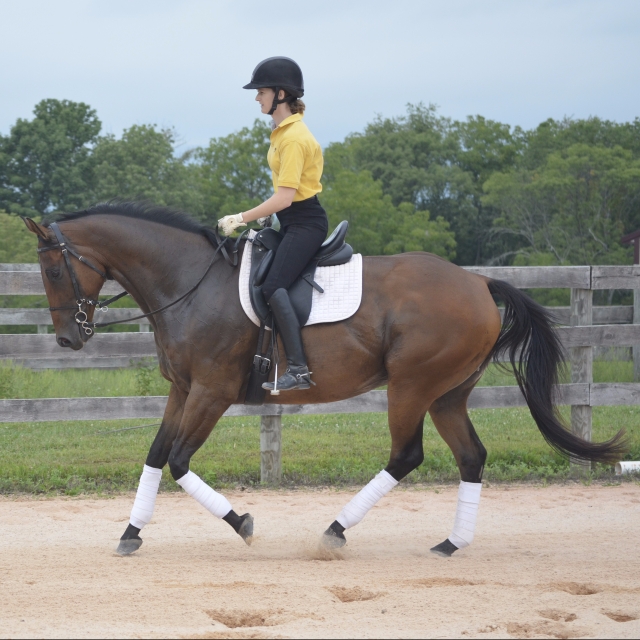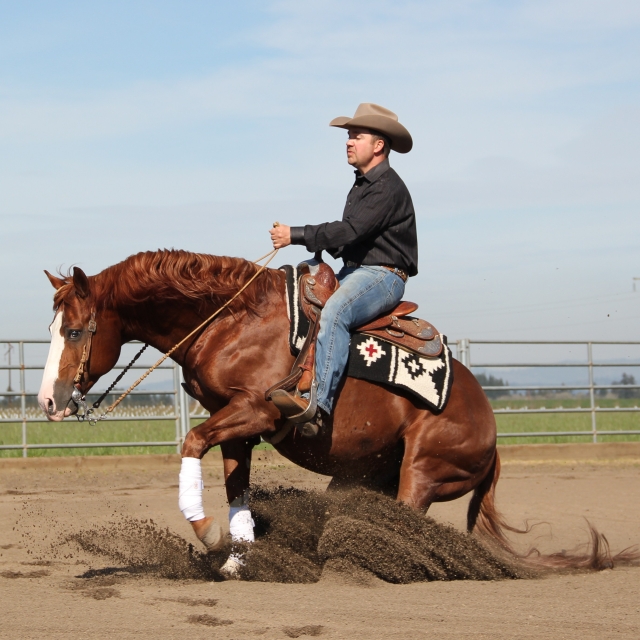Welcome to Part II of the Myler Bit series dedicated to helping you make a better bit choice for your horse. We started the series off with Understanding Bit Resistance. In this blog, we will discuss the Myler Bit Levels, what their intended use is for, and how this relates to your horse.
The Myler Approach to Bitting
In Understanding Bit Resistance, we explained that the primary source of bit resistance is excessive tongue pressure – most commonly from a single jointed or double jointed mouthpiece (ex. french link). Our goal is to give him as much tongue relief as he can mentally handle and respect under saddle.
When you start working with a horse, whether it’s newly started, green broke, or a seasoned competitor – this approach applies to each one equally. When we start any horse, the first thing we work on is teaching them to give to pressure. The first bit we use will apply pressure to the tongue and we look for a positive reaction called “giving to the bit” or flexing at the poll and softening the mouth. As the horse’s understanding of giving to pressure grows, we start to ask for more advanced maneuvers, building off of the initial foundation of giving to pressure.
What we often fail to realize is that the more educated our horse is, the less contact, pressure, and guidance they need (and want). Think back to your first Driver’s Ed class. The instructor gave you frequent commands and corrections, which was extremely helpful and taught you how to safely travel the roads. Now picture that same instructor riding with you on your daily commute.
“We are approaching a stop sign”
“The speed limit is 35 mph”
“Remember check your rearview mirror!”
A tad irritating?
When your obedient, responsive horse becomes unresponsive, irritable, and resists your cues after an extended period of time, remember the analogy above. Some horses seem to “start” off with this mentality. We begin to feel like our horse is working against us or is starting to have an attitude under saddle.
No two horses are mentally or physically identical. Basic training principles may apply, but you can’t work every horse the same from start to finish. Some take more time, some require a soft hand, and some can be downright difficult. Bits will not always fix a horse that is determined to be difficult, but they will give you the best chance in communicating with him in a positive manner. Bits don’t train horses, people do. A bit can only do two things, create interference or promote relaxation. The Leveling System was created in an effort to produce the most effective and positive communication, no matter what experience level your horse is. Below we will start to break down the different levels and the types of horses that usually fit these Level profiles.
Level 1 Bits
Level 1 bits were traditionally recommended for horses being started under saddle, are very green, or challenging. These bits have a middle barrel that prevents the bit from collapsing in a “V” shape, eliminating the nutcracker effect. The bit collapses in a “U” shape, allowing the tongue more room to sit comfortably and reducing the amount of tongue pressure applied compared to a single jointed snaffle.
These mouthpieces are also made for disciplines with rules regulating the type of mouthpiece you can use – often found in dressage. To view all dressage legal bits (of all levels) click HERE.
Because the Level 1 mouthpieces apply the maximum amount of tongue pressure out of all the Levels and offer the least amount of tongue relief, we rarely recommend them. Tongue pressure is useful when introducing a horse to the concept of yielding to pressure, but once he has learned this, the Level 1 mouthpiece doesn’t offer much benefit compared to the other Levels. If you are considering a Level 1 mouthpiece, we would strongly recommend moving up to a Level 2, specifically the MB 04.
Level 2
Level 2 bits are great for green horses with trustworthy dispositions or challenging horses that are showing signs of bit resistance. The Level 2 bits introduce a little more tongue relief than the Level 1 – perfect for sensitive mouthed horses or horses advancing in their training that are starting to resist their current Level 1 bit.
Level 2-3
When you look at the examples of the Level 2-3 mouthpiece, you will notice that all of these mouthpieces have ports. The port gives the tongue room to move, offering increased tongue relief. Some of the mouthpieces are solid (like the 06, 36, 43LP)—these are considered curb bits, which means they don’t use the tongue as a primary pressure but use the bar, lip, poll and chin (if there’s a curb chain or strap). Some of these mouthpieces collapse (like the 41PB, 27PB); a ported bit that collapses is called a correctional. Basically it offers increased tongue relief with a port, but the collapsing action will use the tongue as a pressure point when both reins are engaged. They are used to “correct” a problem, hence the name.
Level 2-3 has the widest variety of mouthpieces, balancing increased tongue relief with varying degrees of tongue pressure.
The Young and Sensitive Student

You take your next shining star into the barn to be started under saddle or perhaps just purchased a green broke youngster with the basics. You take them out to the arena in a single jointed snaffle or Level 1 bit and it is evident that they are heavily resistant to the bit and fidget restlessly. You feel perplexed on where to go from here. This is a perfect example of a green horse that is good minded that needs more tongue relief. The best step up bit being the MB 04. This bit can be used on its own, or in the combination bit series to offer tongue relief while still providing the control that you need.
The Tenacious Teenager

This horse usually has a decent amount of education and has started his career in a particular discipline. He shows a lot of promise and talent but often has his own thoughts and ideas about how his training should go. You have ruled out any pain from saddle fit, chiropractic work, or dental issues. He is resistant in a single jointed snaffle or in a Level 1, but you worry about giving a challenging horse too much freedom. The Level 2 and Level 2-3 bits are great for this situation. Just because we have a horse that definitely needs to have a good handle on them, doesn’t mean we want to leave them in a Level 1. We would suggest a MB 04 for a horse coming from a single joint or Level 1, or perhaps an MB 36 (Level 2-3) if you have a horse currently being ridden in a mullen or MB 04 that shows resistance.
The MB 04 will give them the tongue relief they are looking for, but will still collapse and apply tongue pressure as needed. This is the ideal transition bit if your horse is showing resistance in a single jointed snaffle or a Level 1 mouthpiece. An MB 36 works great for horses that are seeking more tongue relief but still need adequate control. The MB 36 is a mullen mouthpiece with a forward tilt. When you apply pressure to the mouthpiece, it will roll forward onto the tongue instead of collapsing, giving a soft and more subtle cue.
The Seasoned but Stubborn Steed

Whether he is a veteran trail horse or a world champion reining horse, sometimes he just can’t have as much tongue relief as the MB 33 (Level 3) provides as he takes advantage of this freedom. This can mean that he doesn’t have the responsiveness you need in the show pen or you still need a way to remind your forward trail horse that you are in control. The MB 06 mouthpiece gives a good amount of tongue relief while still giving you control when needed. If your horse performs well in a correctional bit but it is still showing some signs of bit resistance, our MB 41PB is an excellent mouthpiece because it offers the same amount of tongue relief as a Level 3 – but applies tongue pressure when needed for control.
Level 3 Bits
Level 3 mouthpieces offer your horse the most tongue relief out of all of the levels. These mouthpieces are best suited for very good-minded, trustworthy horses that have enough training that they don’t need “looked after” under saddle. It is very important to note that with maximum tongue relief comes maximum freedom. This gives ultimate comfort for the seasoned athlete, but can be unsuitable for a challenging horse that tries to take advantage of his rider. Our two most popular Level 3 mouthpieces are the MB 33 and the MB 33WL. Both bits offer maximum tongue relief and are considered the mildest mouthpiece that we offer. The MB 33WL was designed specifically to be USEF and FEI dressage legal.
Steady Eddy

This horse can be a seasoned show horse or your go to trail horse, either way, he is solid, safe, and knows his job. He doesn’t take advantage of his rider or become impatient. He knows and enjoys his job and doesn’t require much direction. This horse would be the perfect candidate for a Level 3 bit. The MB 33 will give him ample tongue relief and will cue mostly off of the lips and bars of his mouth, giving him freedom and the most comfort overall – the perfect reward for your trusted partner.
Still wonder which category your horse falls into? Stay tuned next week for our final part in the Myler Bitting Series where we talk about some of our personal horses and what bits we ride in. You can also visit our website and fill out the Myler Bit Wizard for your bit recommendation!




















